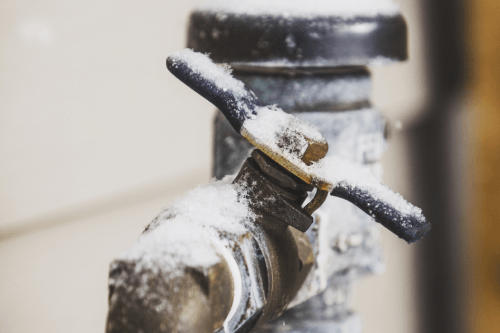Crucial Tips for Preventing Frozen Pipes in Cold Weather Seasons
Crucial Tips for Preventing Frozen Pipes in Cold Weather Seasons
Blog Article
We have uncovered the article on Prevent Frozen Pipes listed below on the net and felt it made perfect sense to quickly share it with you over here.

Cold weather can ruin your pipes, particularly by freezing pipes. Here's exactly how to avoid it from occurring and what to do if it does.
Intro
As temperatures drop, the danger of icy pipelines rises, potentially bring about costly repair services and water damages. Understanding just how to prevent icy pipes is vital for house owners in cool environments.
Understanding Icy Pipes
What creates pipelines to ice up?
Pipelines ice up when revealed to temperatures below 32 ° F (0 ° C) for expanded periods. As water inside the pipes ices up, it broadens, putting pressure on the pipeline walls and possibly triggering them to rupture.
Risks and damages
Icy pipes can lead to water supply disruptions, home damages, and pricey repair work. Ruptured pipelines can flood homes and create considerable structural damage.
Signs of Frozen Water Lines
Identifying icy pipelines early can stop them from bursting.
Exactly how to recognize frozen pipes
Seek reduced water flow from faucets, uncommon smells or noises from pipes, and noticeable frost on exposed pipes.
Avoidance Tips
Shielding vulnerable pipelines
Cover pipes in insulation sleeves or utilize heat tape to secure them from freezing temperatures. Concentrate on pipes in unheated or outside areas of the home.
Home heating techniques
Keep interior spaces properly heated, specifically locations with plumbing. Open cupboard doors to enable cozy air to circulate around pipes under sinks.
Protecting Outdoor Plumbing
Yard tubes and exterior faucets
Detach and drain pipes garden tubes prior to winter season. Set up frost-proof faucets or cover outside taps with insulated caps.
What to Do If Your Pipes Freeze
Immediate actions to take
If you believe frozen pipelines, maintain taps open up to soothe stress as the ice melts. Make use of a hairdryer or towels taken in hot water to thaw pipelines gradually.
Long-Term Solutions
Structural modifications
Think about rerouting pipelines far from outside walls or unheated areas. Include additional insulation to attic rooms, basements, and crawl spaces.
Upgrading insulation
Purchase top notch insulation for pipelines, attic rooms, and wall surfaces. Appropriate insulation assists preserve consistent temperatures and reduces the threat of icy pipelines.
Conclusion
Stopping icy pipes calls for positive measures and quick responses. By recognizing the causes, signs, and preventive measures, house owners can safeguard their pipes during winter.
5 Ways to Prevent Frozen Pipes
Drain Outdoor Faucets and Disconnect Hoses
First, close the shut-off valve that controls the flow of water in the pipe to your outdoor faucet. Then, head outside to disconnect and drain your hose and open the outdoor faucet to allow the water to completely drain out of the line. Turn off the faucet when done. Finally, head back to the shut-off valve and drain the remaining water inside the pipe into a bucket or container. Additionally, if you have a home irrigation system, you should consider hiring an expert to clear the system of water each year.
Insulate Pipes
One of the best and most cost-effective methods for preventing frozen water pipes is to wrap your pipes with insulation. This is especially important for areas in your home that aren’t exposed to heat, such as an attic. We suggest using foam sleeves, which can typically be found at your local hardware store.
Keep Heat Running at 65
Your pipes are located inside your walls, and the temperature there is much colder than the rest of the house. To prevent your pipes from freezing, The Insurance Information Institute suggests that you keep your home heated to at least 65 degrees, even when traveling. You may want to invest in smart devices that can keep an eye on the temperature in your home while you’re away.
Leave Water Dripping
Moving water — even a small trickle — can prevent ice from forming inside your pipes. When freezing temps are imminent, start a drip of water from all faucets that serve exposed pipes. Leaving a few faucets running will also help relieve pressure inside the pipes and help prevent a rupture if the water inside freezes.
Open Cupboard Doors
Warm your kitchen and bathroom pipes by opening cupboards and vanities. You should also leave your interior doors ajar to help warm air circulate evenly throughout your home.

I ran across that page on Winter Plumbing Precautions: Preventing Frozen Pipes when doing a search on the internet. Kindly take a moment to distribute this post if you enjoyed reading it. Thanks for going through it.
Click For More Info Report this page